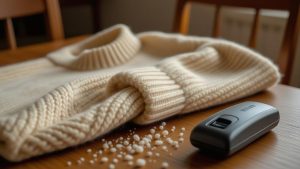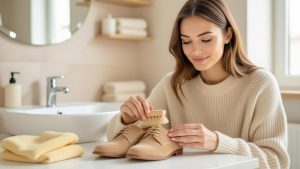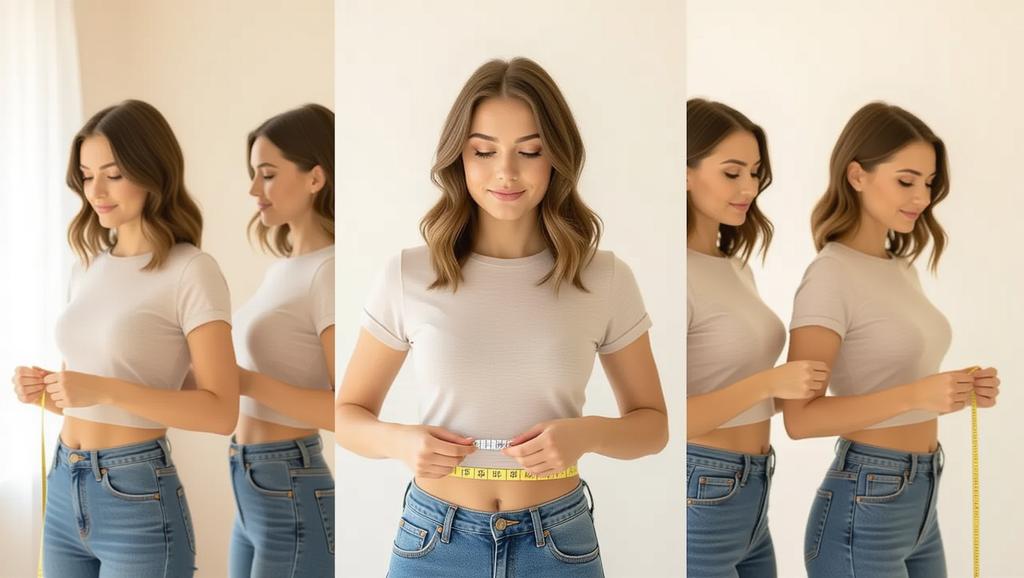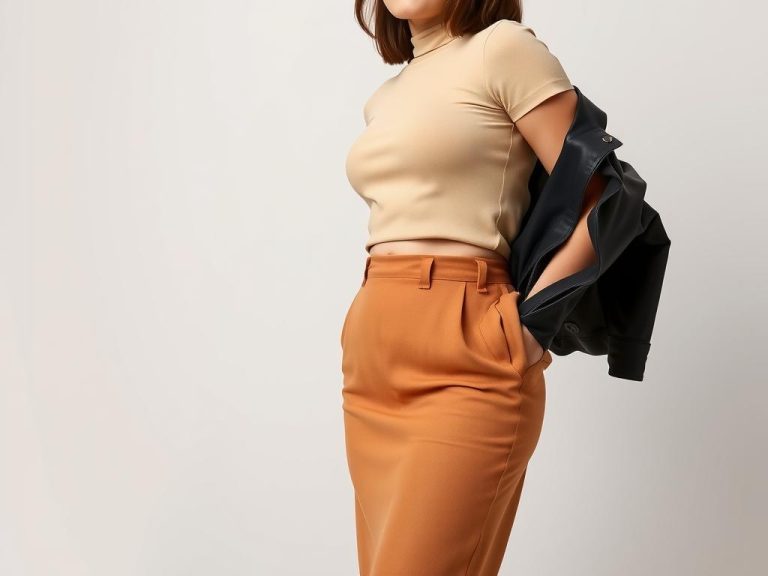Why measuring your waist and hips is important for stylish outfits
When it comes to looking good in your clothes, the fit is everything. Measuring your waist and hips accurately can make all the difference in how your outfits look and feel. I’ve learned through my own experiences that even the most stylish piece can fall flat if it doesn’t fit right. The key to a flattering outfit is understanding your body’s proportions and choosing clothes that enhance your natural shape. By taking the time to measure your waist and hips, you can ensure that every piece you buy or wear will hug your body in all the right places, making you feel confident and comfortable.
Having the right measurements also helps you navigate the often confusing world of sizing. With waist and hip measurement in hand, you can confidently shop online or in stores, knowing exactly what size to look for. This reduces the hassle of returns and the frustration of trying on countless outfits that just don’t fit. Plus, knowing your measurements allows you to tailor your wardrobe to your unique body shape, ensuring that every piece you own complements your figure.
In my opinion, measuring your waist and hips is a small step that can lead to a big impact on your style. It’s not just about numbers; it’s about understanding your body and dressing in a way that makes you feel your best. So, let’s dive into how you can measure your waist and hips accurately and use those measurements to create outfits that flatter your figure.
Tools you need to accurately measure your waist and hips
To measure your waist and hips effectively, you’ll need a few simple tools. First and foremost, a soft measuring tape is essential. Unlike a rigid ruler, a soft tape can wrap around your body, giving you the most accurate measurements. I recommend getting one that’s at least 60 inches long to accommodate all body sizes. You’ll also need a pen and paper or a smartphone to record your measurements. Having a mirror can be helpful to ensure the tape is level and straight.
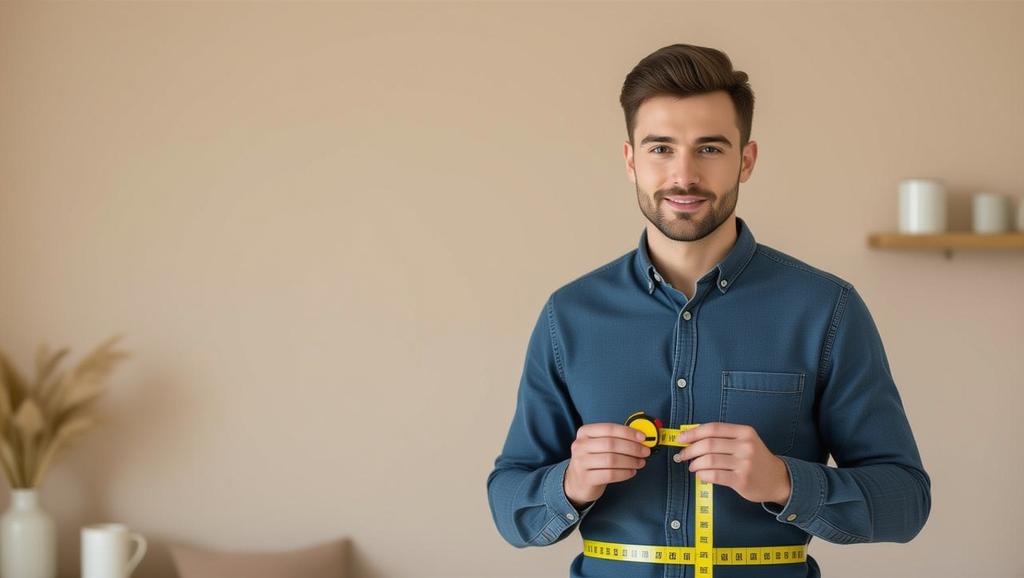
If possible, having a friend to help can make the process easier and more accurate. They can ensure the tape is positioned correctly and take the measurement for you. However, if you’re doing this solo, a mirror can be your best friend. It allows you to check that the tape is parallel to the ground and not twisted or uneven. These tools are all you need to start measuring your waist and hips like a pro.
Personally, I find that having all these tools ready makes the process much smoother. It’s like having a mini fitting room at home, where you can take your time and get the most precise measurements possible. So, gather your tools, and let’s move on to the step-by-step guides for measuring your waist and hips.
Step-by-step guide to measuring your waist
Measuring your waist accurately is crucial for finding clothes that fit well. Here’s how to do it step by step:
-
Find Your Natural Waist: Your natural waist is the narrowest part of your torso, usually about an inch or two above your belly button. To find it, bend to the side, and the crease that forms is your natural waist.
-
Wrap the Tape: Stand up straight and wrap the soft measuring tape around your waist. Make sure the tape is snug but not tight. You should be able to fit one finger between the tape and your body.
-
Take the Measurement: Keep the tape parallel to the ground and take a deep breath. Exhale, and then take your measurement. Record the number to the nearest half inch.
It’s important to measure your waist at the same time of day, as your body can change slightly throughout the day. I find that measuring in the afternoon, after eating a normal meal, gives me the most accurate results. This is because your body is more relaxed and in its natural state.
For me, measuring my waist has been a game-changer in terms of finding pants and skirts that fit perfectly. It’s amazing how a few inches can make such a big difference in how a piece of clothing looks and feels. So, take your time and get this measurement right, as it’s the foundation for a well-fitted wardrobe.
Step-by-step guide to measuring your hips
Measuring your hips is just as important as measuring your waist, especially when it comes to choosing pants, skirts, and dresses. Here’s how to do it correctly:
-
Find the Widest Part: Stand with your feet together and find the widest part of your hips and buttocks. This is usually around the hip bones and the fullest part of your glutes.
-
Wrap the Tape: Wrap the soft measuring tape around this widest part, making sure it’s level all the way around. Keep the tape snug but not tight, and ensure it’s parallel to the ground.
-
Take the Measurement: Take a deep breath, exhale, and then take your measurement. Record the number to the nearest half inch.
Using a mirror can help you ensure the tape is level and not twisted. I’ve found that standing in front of a mirror makes it easier to see if the tape is dipping down or not sitting correctly. It’s a small step that can make a big difference in the accuracy of your measurement.

Measuring my hips has helped me choose clothing that flatters my figure and makes me feel confident. It’s all about finding the right balance between comfort and style, and accurate measurements are the key to achieving that. So, take your time and get this measurement right, as it will guide you in selecting the perfect outfits.
Common mistakes to avoid when measuring your waist and hips
When measuring your waist and hips, it’s easy to make mistakes that can lead to inaccurate measurements. Here are some common pitfalls to avoid:
-
Pulling the Tape Too Tight: One of the biggest mistakes is pulling the measuring tape too tightly around your body. This can result in measurements that are smaller than your actual size, leading to clothes that are too tight. Remember, the tape should be snug but not constricting.
-
Not Using a Mirror: If you’re measuring yourself, it’s crucial to use a mirror to check that the tape is level and not twisted. Without a mirror, you might end up with uneven measurements, which can affect the fit of your clothes.
-
Measuring at the Wrong Time: Your body can change throughout the day, so measuring first thing in the morning might not give you the most accurate results. I’ve found that measuring in the afternoon, after eating a normal meal, provides the most reliable numbers.
By avoiding these common mistakes, you can ensure that your waist and hip measurements are as accurate as possible. This will help you choose clothes that fit well and flatter your figure. In my experience, taking the time to measure correctly has saved me from countless wardrobe frustrations and has allowed me to build a collection of outfits that make me feel great.
How to use your waist and hip measurements to choose flattering clothes
Once you have your waist and hip measurements, you can use them to select clothes that flatter your figure. Here’s how:
Understanding body shapes and clothing styles
Understanding your body shape is key to choosing clothes that enhance your natural proportions. There are several common body shapes, including hourglass, pear, apple, and rectangle. Each shape has its own set of flattering styles. For example, if you have an hourglass figure, you might want to emphasize your waist with fitted dresses and belts. If you have a pear shape, A-line skirts and dresses can balance your hips and shoulders.
Knowing your waist and hip measurements can help you identify your body shape and choose clothing styles that work best for you. I’ve found that understanding my body shape has helped me make better shopping decisions and build a wardrobe that makes me feel confident and stylish.
Tips for selecting pants and skirts based on your measurements
When it comes to pants and skirts, your waist and hip measurements are crucial. Here are some tips for selecting the right pieces:
-
Pants: Look for pants with a waist size that matches your natural waist measurement. If your hips are wider than your waist, opt for pants with a bit of stretch or a relaxed fit around the hips. High-waisted pants can also help create a flattering silhouette.
-
Skirts: For skirts, focus on the hip measurement. A-line skirts are great for balancing wider hips, while pencil skirts can accentuate your curves if they fit well at the hips. Make sure the waist of the skirt matches your natural waist measurement for the best fit.
In my experience, finding pants and skirts that fit well at the waist and hips has transformed my wardrobe. It’s amazing how a few inches can make such a big difference in how a piece of clothing looks and feels. So, use your measurements to guide your choices and create a collection of pants and skirts that flatter your figure.
Tips for selecting dresses and tops based on your measurements
Dresses and tops can be tricky to fit, but your waist and hip measurements can help you choose the right styles. Here are some tips:
-
Dresses: Look for dresses that fit well at both the waist and hips. If your waist is smaller than your hips, a fitted waist or a belt can help create a flattering silhouette. A-line and wrap dresses are versatile styles that can work well for many body shapes.
-
Tops: For tops, focus on the bust and waist measurements. If your waist is smaller than your bust, fitted tops can help define your waistline. If your bust is larger, look for tops with a bit of stretch or a relaxed fit to ensure comfort and a flattering fit.
Using your measurements to select dresses and tops has made a huge difference in my wardrobe. I’ve found that choosing pieces that fit well at the waist and hips not only looks better but also feels more comfortable. So, take the time to measure and use those numbers to guide your shopping decisions.
Adjusting your measurements for different types of clothing
Different types of clothing can require slight adjustments to your waist and hip measurements. Here’s how to adapt your measurements for various pieces:
-
Structured Garments: For structured pieces like blazers and tailored pants, you might want to add a bit of ease to your measurements. This means adding a half inch to an inch to your waist and hip measurements to ensure a comfortable fit.
-
Stretchy Fabrics: If you’re buying clothes made from stretchy fabrics, you can often go down a size from your regular measurements. These fabrics will stretch to fit your body, so a slightly smaller size can still be comfortable and flattering.
-
High-Waisted and Low-Rise Styles: High-waisted pants and skirts should be measured at your natural waist, while low-rise styles should be measured at your low waist, just above your hips. Adjusting your measurements for these styles can help you find pieces that fit perfectly.
In my experience, adjusting my measurements for different types of clothing has helped me build a versatile wardrobe. It’s all about understanding how different fabrics and styles fit your body and making small adjustments to ensure the perfect fit. So, take the time to consider the type of clothing you’re buying and adjust your measurements accordingly.
The impact of weight fluctuations on your waist and hip measurements
Weight fluctuations can have a significant impact on your waist and hip measurements. Whether you gain or lose weight, your body’s proportions can change, affecting how your clothes fit. Here’s how to manage these changes:
-
Regular Re-Measurement: If you notice changes in your weight, it’s a good idea to re-measure your waist and hips. This can help you adjust your wardrobe and ensure that your clothes still fit well. I’ve found that re-measuring every few months, or whenever I notice a significant change, helps me stay on top of my wardrobe.
-
Tailoring: If you’ve gained or lost weight, tailoring can be a great way to adjust your clothes to fit your new measurements. A skilled tailor can take in or let out seams to ensure that your favorite pieces still look and feel great.
-
Shopping for New Sizes: Sometimes, weight fluctuations mean that you need to shop for new sizes. Use your updated measurements to guide your shopping decisions and find clothes that fit your current body shape. It’s all about embracing your body’s changes and finding pieces that make you feel confident and comfortable.
Personally, I’ve experienced weight fluctuations over the years, and adjusting my wardrobe to fit my new measurements has been key to feeling good in my clothes. It’s a reminder that our bodies are always changing, and it’s important to adapt our wardrobes to fit those changes.
How often should you re-measure your waist and hips?
Re-measuring your waist and hips regularly can help you stay on top of your wardrobe and ensure that your clothes always fit well. Here’s how often you should consider re-measuring:
-
Every Few Months: As a general rule, re-measuring every few months can help you catch any changes in your body. This is especially important if you’re actively trying to gain or lose weight, as your measurements can change quickly.
-
After Significant Changes: If you experience significant changes in your weight, muscle mass, or body shape, it’s a good idea to re-measure your waist and hips. This can help you adjust your wardrobe and ensure that your clothes still fit well.
-
Before Major Purchases: Before investing in key wardrobe staples or tailoring your pieces, recheck your measurements. This can help you make informed decisions and ensure that your new purchases fit perfectly.
In my experience, re-measuring my waist and hips regularly has helped me maintain a wardrobe that fits well and makes me feel confident. It’s a small step that can make a big difference in how your clothes look and feel. So, make it a habit to re-measure every few months and after any significant changes to your body.
Conclusion: Achieving a perfect fit with accurate waist and hip measurements
Achieving a perfect fit with your clothes starts with accurate waist and hip measurements. By taking the time to measure correctly and use those measurements to guide your shopping decisions, you can build a wardrobe that flatters your figure and makes you feel confident. Whether you’re selecting pants, skirts, dresses, or tops, knowing your waist and hip measurements is the key to finding pieces that fit well and enhance your style.
In my journey with fashion, I’ve learned that the right fit can transform how you feel in your clothes. It’s not just about the numbers; it’s about understanding your body and dressing in a way that makes you feel your best. So, take the time to measure your waist and hips, and use those measurements to create outfits that flatter your figure. With a little effort and the right tools, you can achieve a perfect fit and embrace your unique style.
Read more What should you wear if you’re curvy on the bottom?

